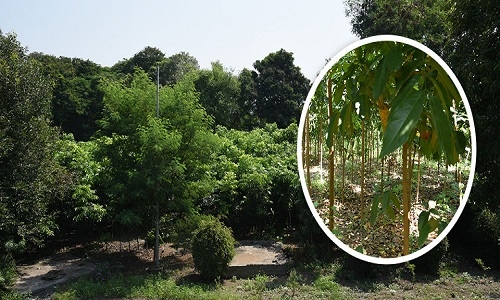Orange City to have its first People’s Biodiversity Register
28 Jun 2022 06:46:07

By Sagar Mohod
For the first time in history, Nagpur Municipal Corporation (NMC) is going for the preparation of People’s Biodiversity Register (PBR) to have a complete scientific data about city’s ecology, its ecosystem and the local environment. The study is being commissioned with an aim to help with formulation of plan for preservation of habitats plus help in rolling out plans for conservation of land, races and folk varieties. The PBR is mandated as per the Biological Diversity Act, 2002.
PBR study would involve chronicling of knowledge relating to diversity of the area and would be a participatory process, said Amol Chourpagar, Garden Superintendent, NMC, while talking to ‘The Hitavada’. During the drive, the agency tasked with work would carry out survey for assessing details about the folk varieties, cultivar, domesticated stock, the breeds of animals and micro-organisms.
It’s more or less a census exercise wherein the numbers of each micro organism, the microbes that are found in city’s environment would be calculated and subsequently analysed. The biological diversity of the area would also be documented post consultation with all the stakeholders, mainly the local population who might be repository of historical data about their surroundings.
Post PRB, NMC will go for computation of city biodiversity index (CBI), also referred to as Singapore Index on Cities’ Biodiversity. It measures biodiversity in cities and showcases biodiversity conservation efforts and list steps on its further improvement.
Chourpagar said the idea of CBI was proposed at the Conference of Parties (COP) to the Convention of Biological Diversity (CBD) in 2008 and then formulated by National Parks Board of Singapore (N Parks), in cooperation with the United Nations (UN) and a task force of international experts. The index was officially endorsed as a self-assessment monitoring tool catering specifically to cities and urban biodiversity.
NMC is also going for calculating the values of each indicator so as to arrive at the index for the city, in line with methods and tools prescribed by the N Parks.
The third stage involves preparation of local biodiversity strategy and action plan (LBSAP), an instrument to integrate biodiversity and ecosystem services with conventional urban planning and city management process. The instrument so designed will enable the implementation of the CBD and the Aichi targets in alignment with the Sustainable Development Goal (SDGs) number 11, 14 & 15 that bats for sustainable cities and conserving life on earth and in water for ensuring environmental sustainability. The aim as per Chourpagar is to help the policy makers to know impact of city's anthropogenic activities that are beyond the administrative control.
LBSAP primarily will be a document that will spell out the strategies and
action plan for preservation of the green (that also contains the blue infrastructure–i.e. the water bodies like rivers, lakes, ponds, creeks, wetlands) infrastructure (hubs and corridors, sacred groves, open spaces, parks, farm lands) or land conservation and its integration with the grey infrastructure (built infrastructure constituting of both the physical and social infrastructure). LBSAP in short would be a document that enables integration of ecological (that is biodiversity and ecosystem services) and environmental planning with urban planning and management. It would also define various strategies and plans, along with broad estimates, to be implemented by NMC over a five-year-period, to make city livable and sustainable.
GIS-based tree census soon
Known as one of the greenest city of country, Nagpur Municipal Corporation (NMC) is going for a status check through leveraging of technology for its next tree census. Last tree census in city was done in year 2011 and now Garden Department is keen for preparing the geoenabled map so as to have real time information.
Amol Chourpagar said that the census was to be carried out over a period of two years using GIS and GPS would come in handy to know actual tree cover in various areas of the city. Annually NMC undertakes plantation of 60 to 70,000 saplings and once digital map of tree cover is ready, Garden Department would have precise knowledge of where to undertake plantation.
With tree census, each of the tree will have unique identity code, with its precise location, its status like the tree like girth, feeding latitude and longitude information. During the census about 34 parameters are going to be covered and the database so prepared would come handy for future reference. Supposedly in future if some trees are needed to be felled then it would not be necessary for spot inspection.